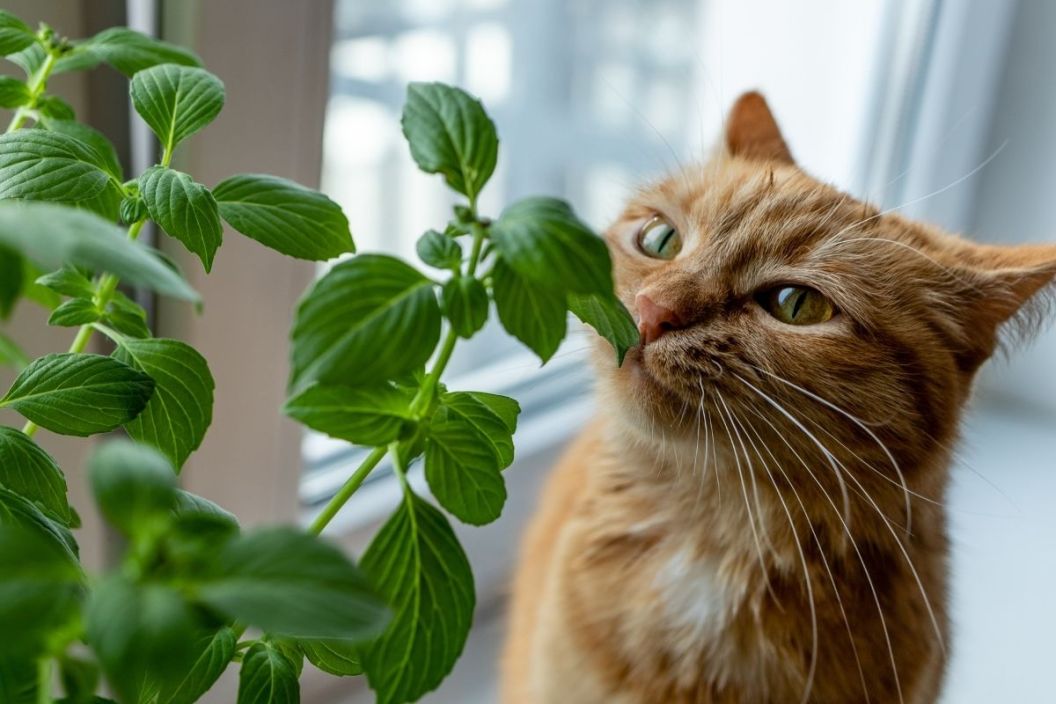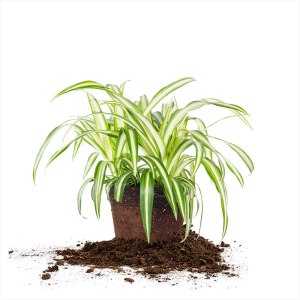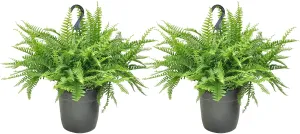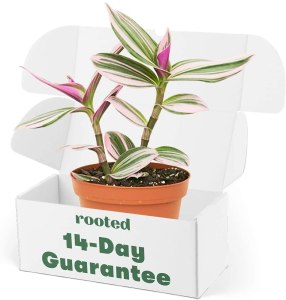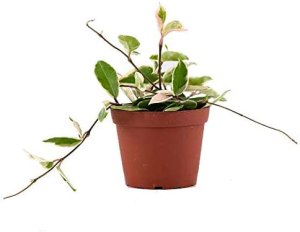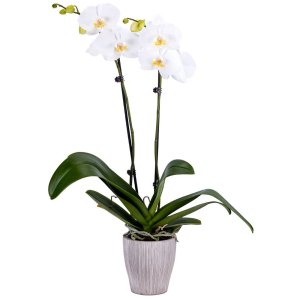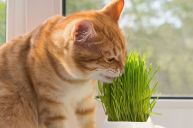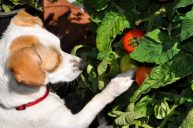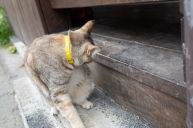Editor's Note: Products featured on Wide Open Pets are independently selected by our editors. However, when you buy something through our links, we may earn a commission.
Check out this easy, go-to guide for introducing safe indoor plants that won't pose a risk to your four-legged friends!
Most pet owners already know that certain species of houseplants can pose a threat to the health of their furry friends, but here's an easy reference for anyone looking to add some greenery air purifying goodness to their indoor spaces without compromising the welfare of their pets. When choosing houseplants safe for cats and dogs, it's important to keep in mind that pets will usually munch on plants if given the chance. If your pet is tempted to nibble at your plants, here are a few you can snag without worrying about the effect on your pet.
Check out these common houseplants safe for cats and dogs available on Amazon.
Signs of Poisoning in Cats & Dogs
Cats.org.uk says signs of poisoning are salivation, vomiting, diarrhea, twitching, inflammation of the skin, and changes in drinking, urinating, and appetite. If you notice anything out of the norm, take your pet to the vet immediately.
If you're wondering if this means your essential oils can be poisonous to your pets, the answer is yes. Essential oils such as eucalyptus, peppermint oil, clove oil, and more are poisonous to cats. Be careful shopping for oils if you like to use diffusers in your home. For a list of more essential oils that can be poisonous to your pet, visit the Pet Poison Helpline.
Safe Houseplants for Cats and Dogs
1. Money Tree
https://www.instagram.com/p/BRI1Szqh9tZ/?taken-by=houseplantjournal
The money tree, or money plant, not only works to reduce toxins such as formaldehyde from the air but is an excellent pet-safe choice for anyone with asthma, lung issues, or people who call a smoggy city home. They also love bright light.
Plus, they're known for inviting in luck and prosperity and won't bother any curious critters.
2. Palms
https://www.instagram.com/p/BRKj_yHBBqK/?tagged=areca
There are several varieties of palm that are easy to keep indoors and won't leave your furry friends sick.
If you're just starting to cultivate your green thumb, consider the areca palm, which doesn't require much care, and naturally purifies the air around it. This popular houseplant loves direct sunlight.
3. Spider Plant
Sturdy, safe, and sprouting off dozens of shoots that are easy to clip and cultivate, the spider plant is an excellent way to bring some healing yet decorative flair to any room. This pet-friendly plant does well indirect light.
Because this plant tends to dangle, place it high up in a hanging basket to avoid any cat-induced catastrophes - those stems can be enticing!
4. Boston Fern
https://www.instagram.com/p/BO5wtkuAw08/?tagged=bostonfern
Boston ferns are said to work as a living air humidifier, perfect for anyone stuck indoors in areas where harsh winters force us to blast dry heat from air vents. High humidity can help sinuses and allergies, making your fall and spring more pleasant as well.
5. Tradescantia Zebrina
https://www.instagram.com/p/BKI9DPygiRg/?taken-by=adamsandsongardens
Non-toxic and known to spread into a lush display, this purple plant is wonderful for hanging near a windowsill or draped over an end table, and cats are known to love their soft, curling leaves!
6. Wax Plant
https://www.instagram.com/p/BRKE_q-gAML/?taken-by=leafkeeper
This sturdy non-toxic plant is great for anyone frequently exposed to chemicals found in paint, gasoline, or smog and is non-toxic to both dogs and cats.
7. African Violet
https://www.instagram.com/p/BROa-BIA7zb/?tagged=africanviolet
For anyone looking to add a pop of color to their home, consider the African violet, whose leaves typically bear a purple or deep pinkish hue.
If you can find a sunny spot for this plant to settle, you and your furry friend can enjoy its beautiful blooms year-round.
8. Moth Orchids
https://www.instagram.com/p/ByBVdfXIOa4/
This one might require a little more skill to keep, but moth orchids not only bring beautiful blossoms indoors but they also purify indoor air.
They are most well known to combat paint fumes, so if you happen to know of any pet parents who recently made a move, this could make for a wonderful housewarming gift.
9. Cast Iron Plant
https://www.instagram.com/p/B76sfeqgQYZ/?utm_medium=copy_link
Beautiful, hearty, and tough as nails, the cast iron plant will do well under just about any conditions inside the home and also makes for a great garden filler for the outside areas as well.
Particularly curious critters may be tempted to chew on the large leaves, but luckily, it's non-toxic and won't cause any harm.
10. Bamboo
https://www.instagram.com/p/BRFy_o4Ae4s/?tagged=bamboo
This is obviously an excessive amount for an indoor space, but potted bamboo is easy to find just about anywhere, and it only grow as large as its container, so you won't have to worry about overgrowth.
It also makes for a great and safe way to detox the air inside any home or apartment. Houseplants improve air quality, and most are relatively low-maintenance. They also make beautiful home decor.
There are plenty of safe plants out there to decorate and increase the air quality in the home without harming your pets. However, a few potted poisonous plants are known for being highly toxic, so be sure to steer clear of succulents (especially if you have curious cats), snake plants, and oleander, which can even be toxic to young children! Sure signs that your cat has gotten into something they shouldn't have are vomiting and diarrhea.
11. Prayer Plant
https://www.instagram.com/p/BzUWvNNg-H3/
The ASPCA says prayer plants are pet-friendly. They require low light conditions and are non-toxic to both cats and dogs. When the sun goes down, the leaves on the plants come together like prayer hands, and that's why they're called prayer plants. These cat-friendly plants are fantastic!
12. Christmas Cactus
https://www.instagram.com/p/BzQpUd5lopx/
Mix things up around the holiday season with a Christmas cactus plant. The red and green leaves scream Christmas time. As someone who goes all out with mini Christmas trees all around the house, this will make a great alternative. Christmas cacti work as hanging plants, or you can keep them on flat surfaces.
Don't let the soil get too moist, as it will cause root rot.
13. Swedish Ivy
https://www.instagram.com/p/BvLDuwqggSV/
Swedish ivy grows well in room temperatures and indirect sunlight. Perfect for indoors and safe for our fur babies. Be sure to keep soil moist.
Do you have any pet-safe plants? Which ones do you have? Tell us on the Wide Open Pets Facebook Page!
This post was originally published on August 8, 2018.
READ MORE: Pet Poison Prevention Tips: Common Toxic Food and Plants
